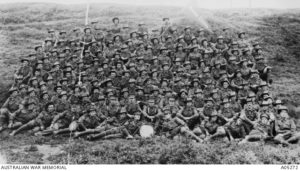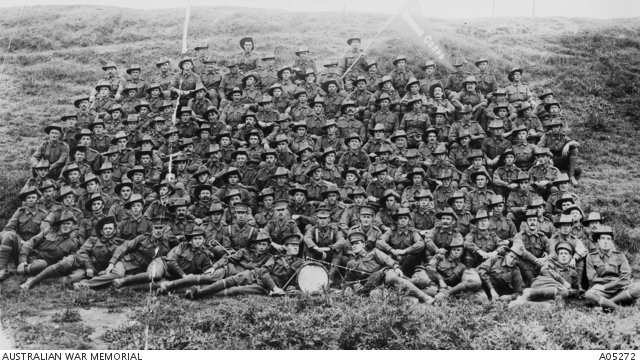The name McConnell is synonymous with the history of the gold mining district of Ophir. Members of the family worked as miners, storekeepers and publicans in the early years of the settlement.
Charles Cornelius McConnell was working as a miner at Ophir when he enlisted in August 1915. Charles’ father John had died in 1896, and his mother Sarah in 1913, so Charles nominated his sister, Agnes, as his next of kin.
Charles and his youngest brother, Donald McConnell, enlisted on 4 August 1915 and were issued the service numbers 206 and 207 respectively. They were both assigned to the 1st Australian Mining Corps as sappers and embarked HMAT A38 Ulysses in Sydney on 20 February 1916. They arrived at Melbourne on 23 February and proceeded to Broadmeadows camp for eight days. They docked at Fremantle on 7 March and were all set to sail two days later when the Ulysses ran aground on a reef. They spent three weeks at Blackboy Camp, re-embarking on 1 April.
Charles described many adventures of the voyage to England in a letter to Agnes, including how their vessel narrowly missed a mine near Malta.
A cargo boat, flying the Allies flag, and travelling the same direction as us to Malta, and the crew were waving and cheering us and going at full speed. Later on, when some distance in front of us, she crossed our course and was seen by the ship’s captain to drop a mine for us, so [we] immediately changed course, and at once sent a wireless to Malta. This boat had a cargo of onions, but, on closer investigation by the authorities, they discovered over 100 mines hidden beneath the onions.
The brothers entered Perham Downs Camp for further training before proceeding to Marseilles on 5 May 1916.
In November 1916 Charles was hospitalised after developing pterygiums; fleshy growths on the eye resulting from exposure. He was transferred to the 1st Eastern General Hospital in England where he underwent an operation to alleviate the condition.
Charles rejoined his unit in Etaples in May 1917. In December that year he was admitted to the 1st Australian Field Ambulance with bronchitis. He was transferred to 4th General Hospital in Camiers, where his condition continued to deteriorate. Charles died on 11 February 1918 and was buried in the Etaples Military Cemetery.
In July 1918 Agnes received her brother’s personal effects. These included a YMCA pocket book, a pouch, a knife, some photographs and a deck of playing cards.
In December 1922 the Base Records Office sent the following letter to Agnes:
Dear Madam
Under the Deceased Soldiers’ Estates Act of 1918 the claims of brothers must be considered before those of sisters, when disposing of war mementos, unless there are good and sufficient reasons for varying the procedure.
Will you therefore kindly furnish me with the name and address of the eldest surviving brother of the deceased soldier, in order that I may communicate with him and ascertain his wishes in regard to the disposal of these mementos.
Charles’ eldest brother, George, was living in Orange at the time, but it is unknown whether Charles’ medals were issued to George or Agnes.
Charles Cornelius McConnell is commemorated on the Holy Trinity Church Orange Honour Roll, the World War I Roll of Honour on the southern face of the Orange Cenotaph and panel no 27 on the Roll of Honour at the Australian War Memorial in Canberra.
In 1923 the Anzac Memorial Avenue of trees was planted along Bathurst Road to commemorate fallen WWI soldiers. A tree was planted in honour of “Sapper CC McConnell”; it was donated by HG Sands. Very few of the trees are still standing today.
Charles’ brother, Donald McConnell, survived the war. He returned to Australia in March 1919. A cousin, Alfred Allen McConnell also served in WWI; he returned to Australia in June 1918.

Group portrait of officers, non-commissioned officers and sappers of No. 1 Company of the 1st Australian Mining Corps, November 1915. Image courtesy Australian War Memorial. Charles Cornelius McConnell is in the second last row, 5th from the right, just in front of the flag bearer. Donald McConnell is beside him, 4th from the right, directly beneath the flag.

